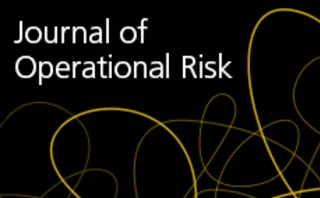Technical paper/Risk management
A practical maturity assessment method for model risk management in banks
This paper proposes a qualitative method to assess the maturity of model risk management practices within banks.
Risk management for private equity funds
This paper aims to fill a gap in the literature by developing the first comprehensive risk management framework for private equity fund investments.
Trading lightly: cross-impact and optimal portfolio execution
A liquidity model for basket of correlated securities is presented
Various approximations of the total aggregate loss quantile function with application to operational risk
This paper investigates the mechanics of the empirical aggregate loss bootstrap distribution.
A gradient-boosting decision-tree approach for firm failure prediction: an empirical model evaluation of Chinese listed companies
In this paper, the authors employ a gradient-boosting decision-tree method to improve firm failure prediction and explain how to better analyze the relative importance of each financial variable.
Optimal execution of accelerated share repurchase contracts with fixed notional
This paper studies the pricing and optimal execution strategy of an accelerated share repurchase contract with a fixed notional.
Forecasting scenarios from the perspective of a reverse stress test using second-order cone programming
This paper proposes a model for forecasting scenarios from the perspective of a reverse stress test using interest rate, equity and foreign exchange data.
Does higher-frequency data always help to predict longer-horizon volatility?
This paper shows that realized conditional autocorrelation in return residuals is a strong predictor of the relative performance of different frequency models of volatility.
Managing energy market volumetric risk
Krzysztof Wolyniec presents a volumetric risk management model for energy markets
P&L attribution for energy portfolios with non-linear exposures
Carlos Blanco and Alessandro Mauro explain how non-linear P&L attribution tools can improve a company’s business intelligence capabilities
Operational risk and the three lines of defence in UK financial institutions: is three really the magic number?
This paper examines the three lines of defence in the context of ORM in UK financial institutions.
Analytical method of computing stressed value-at-risk with conditional value-at-risk
The author of this paper develops an analytical form of stressed value-at-risk (analytical SVaR), using conditional value-at-risk (CoVaR).
How risk managers should fix tracking error volatility and value-at-risk constraints in asset management
In this paper, the author determines an optimal value for a set of limits composed of the lower limit on TEV, the upper limit on TEV and the upper limit on VaR.
Adjusting VAR to correct sample volatility bias
David Frank proposes an adjustment to sample variance for the computation of value-at-risk
Compositional methods applied to capital allocation problems
In this paper, the authors examine the relationship between capital allocation problems and compositional data, and show that capital allocation principles can be interpreted as compositions.
Decomposition of portfolio risk into independent factors using an inductive causal search algorithm
This paper presents a method to estimate and decompose a portfolio’s risk along independent factors.
Static mitigation of volumetric risk
This paper formulates a functional optimization problem over a set of regular payoff functions to deal with the joint mitigation of combined price–volume risk using purely financial tools.
Risk management and portfolio optimization for gas- and coal-fired power plants in Germany: a multivariate GARCH approach
This paper investigates the hedging effectiveness of energy derivatives traded at the EEX for the purpose of mitigating the risk exposure of gas- and coal-fired power plants in Germany.
Two sides of the same coin: risk measures in the energy markets
This paper investigates whether there are existing common model features that yield consistently superior results under both VaR and ES risk metrics in the energy commodities markets.
Stochastic receding horizon control for short-term risk management in foreign exchange
The authors of this paper formalize a methodology to manage short-term FX risk.
Evaluating the performance of the skewed distributions to forecast value-at-risk in the global financial crisis
This paper models the tail behavior of daily returns and forecasting VaR in order to evaluate the performance of several skewed and symmetric distributions.
An application of sensitivity analysis to hedge funds
This paper investigates a sample of 142 live hedge funds via a DEA sensitivity analysis using a super-efficiency model.
Johnson-Omega performance measure
Alexander Passow presents a portfolio performance measure that combines the omega measure with Johnson distributions
Estimation of risk measures on electricity markets with fat-tailed distributions
This paper proposes an AR–GARCH-type EVT model with various innovations for energy price risk quantification.








